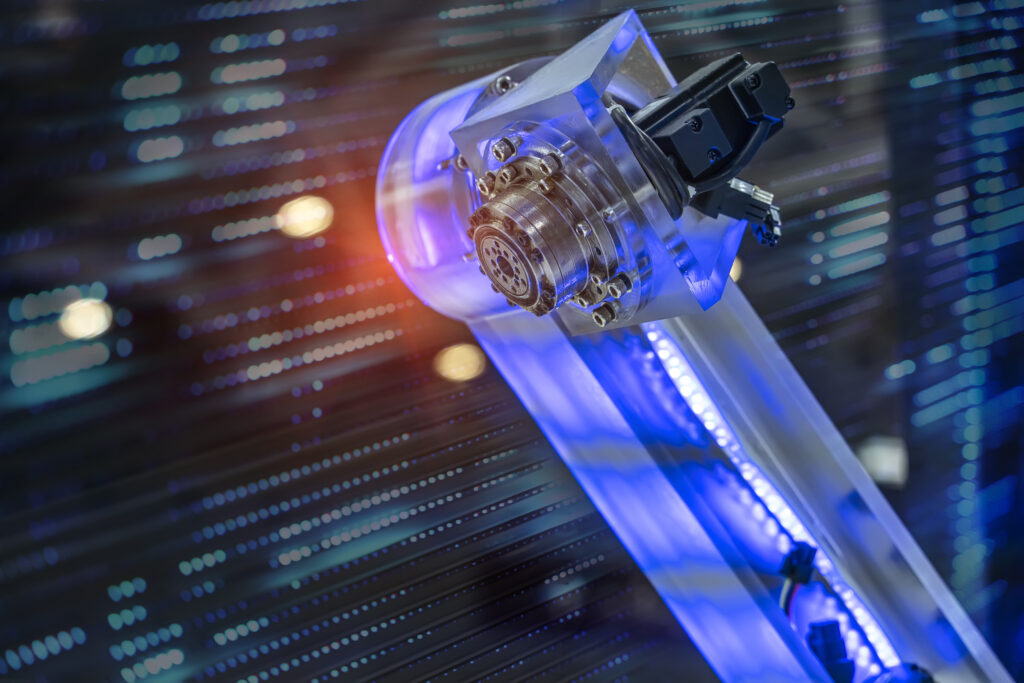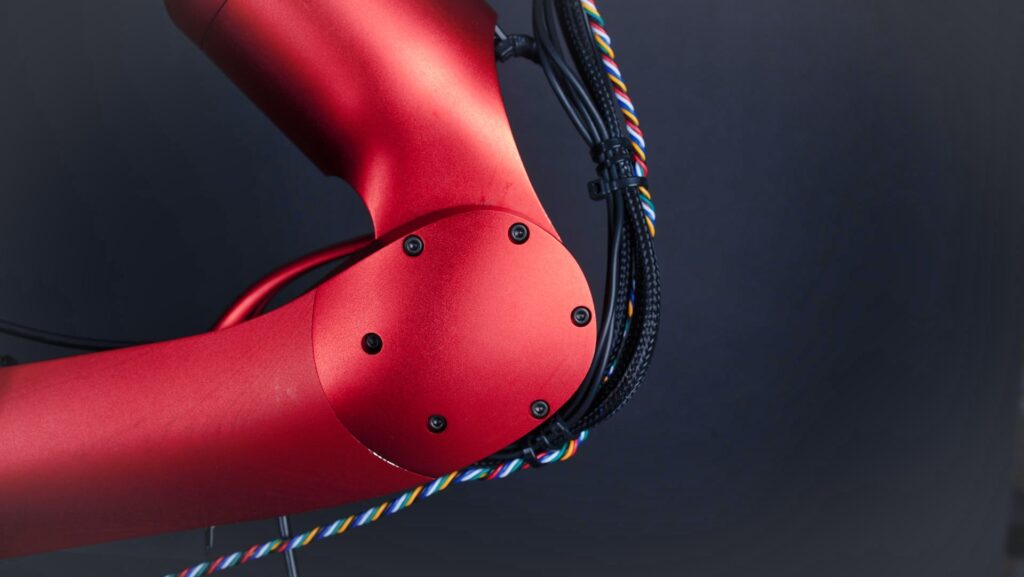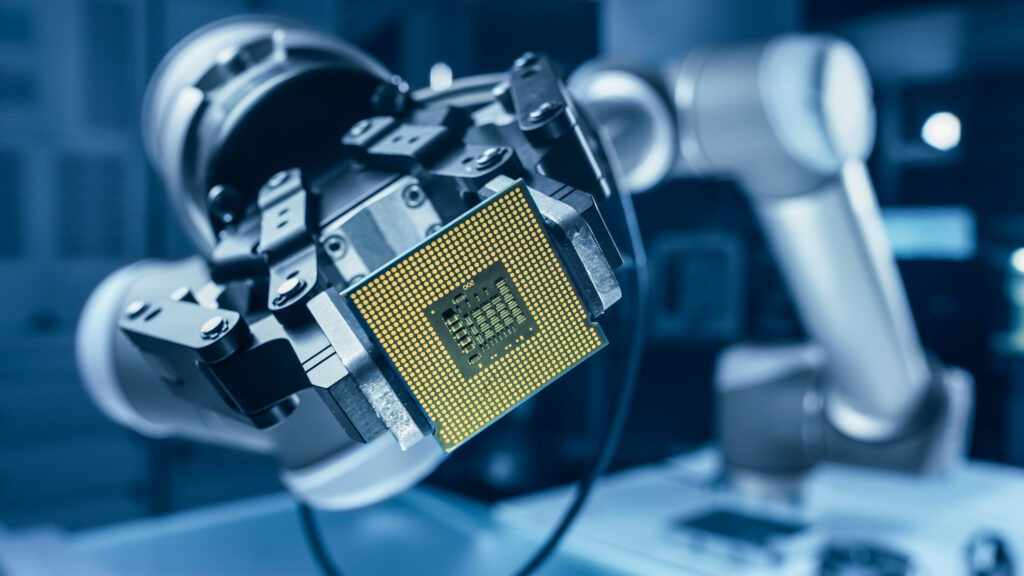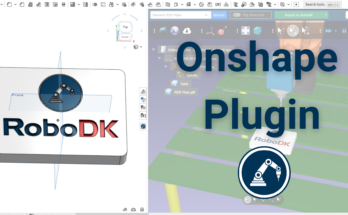There are various types of robot joints. It’s helpful to learn about these different joints so you can better understand the workings of the robots you are using.
Each joint type will affect the range of motion and capabilities of your robot.
The challenge for newer robot users is that there are different ways to categorize robot joints. This can make them confusing.
A basic understanding of the types of joints can really help you get the most from your robots. In this article, we explore the various ways you can look at robot joint types.
How Do You Determine Different Robot Joint Types?
Like many people, you might just look at a robot and see it as a single machine. The robot operates as a single unit. However, you can also “zoom in” on the robot and look at its component parts.
All industrial robots are basically just a chain or collections of “joints.” Robot joints are mechanisms that create motion in one or more of the robot’s axes. Together, the robot’s joints create the desired motions of a robot’s limbs.
It’s helpful to know about robot joint types so you can understand which robots will be most suitable for your needs.

There are 3 basic ways you can categorize robot joints:
- By actuation type
- By kinematic design
- By joint function
Each of these offers a useful perspective as to what makes a particular robot joint work. We’ll look at each of them in turn below.
3 Types of Robot Joint by Actuation Type
The first way to categorize robot joints is by their actuation type. An actuator refers to any mechanical or electromechanical device that creates motion. The actuator generates a force using a particular type of energy.
Here are the 3 basic types of robot actuators:
1. Electric
An electric actuator converts electrical energy into motion with an electric motor. This creates a torque that moves the robot joint.
Electric actuators are probably the most common actuator type in robotics. They are fast, precise, and very portable. Although they are not as powerful as the other 2 types of actuator, they offer a good cost-to-strength ratio.
2. Pneumatic
A pneumatic actuator creates force through the application of compressed air. As many manufacturing facilities already have pneumatic lines installed, this can be a handy option and is often used for robot tools.
Benefits of pneumatics include its fast speed and simplicity. However, it offers limited power compared to hydraulics and requires a lot more extra hardware (pumps and pipes) compared to electric systems.
3. Hydraulic
A hydraulic actuator uses pressurized liquid to create motion. They offer more strength than the alternatives, which is why hydraulics are often used for heavy-duty applications.
Hydraulic robots are often the strongest with a high range of mobility. However, they are expensive, require high maintenance, and can be very messy if the liquid leaks.
3 Robot Joint Types by Kinematic Design
Another way to look at robot joints is to classify them by how they move. This is determined by their kinematic design. Each joint will have one or more degrees of freedom which are arranged differently depending on the joint type.
Here are the 3 most common joint types by kinematic design:
1. Linear
A linear or prismatic joint can move in a translational or sliding movement along a single axis.
It is probably the simplest type of joint to imagine and is the easiest to control. Actuating the joint makes it longer or shorter.
2. Revolute
A revolute or rotational joint moves around a point about one degree of freedom. You can think of a revolute joint as being like the elbow joint in your arm — it can bend only in one direction.
Most industrial robots comprise a series of revolute or rotational joints. As a result, there are well-established control strategies for revolute joints.

3. Spherical
A spherical joint can move in multiple degrees of freedom around a single point. You can think of a spherical joint as being like the top shoulder joint of your arm — it can move in multiple directions but around the same point.
Spherical joint control can get quite complex. Sometimes, it’s easier to describe the spherical joint as being 3 revolute joints with an axis that intersects at a common point.
3 Robot Joint Types by Function
The last way to look at robot joints is often the most useful for industrial robotics. Here, we look at the robot joint by its function or role in an industrial manipulator.
The 3 functions of an industrial manipulator joint are:
1. Shoulder Joint
The shoulder joint sits at the base of a robotic manipulator.
It is often the biggest joint and determines how much the robot can turn around. It has the most significant effect on the size of the robot’s workspace.
2. Elbow Joint
The elbow joint sits in the middle of the robotic manipulator.
It has the most impact on the robot’s lifting strength and sets a large proportion of the robot’s range of motion. If the elbow joint is restricted, the robot’s workspace will also be restricted.
3. Wrist Joint
The wrist joint sits at the end of the robotic manipulator.
It has the most effect on the position of the robot’s end effector. Often, wrist joints can spin a full 360 degrees. It is also subjected to more vibrations caused by the environment than other joints.

What Do You Really Need to Know About Robot Arm Joint Design?
Now that you know the basics of robot joints, you can understand a little more about how robots are designed.
However, unless you are building your own robots, you probably don’t need to know much more. It’s most useful when you know the type of robot that you will use and how you can apply them to your particular application.
With the right robot programming tool, the software handles most of the complexity.
What questions do you still have about robot joints? Tell us in the comments below or join the discussion on LinkedIn, Twitter, Facebook, Instagram, or in the RoboDK Forum.. Also, check out our extensive video collection and subscribe to the RoboDK YouTube Channel




